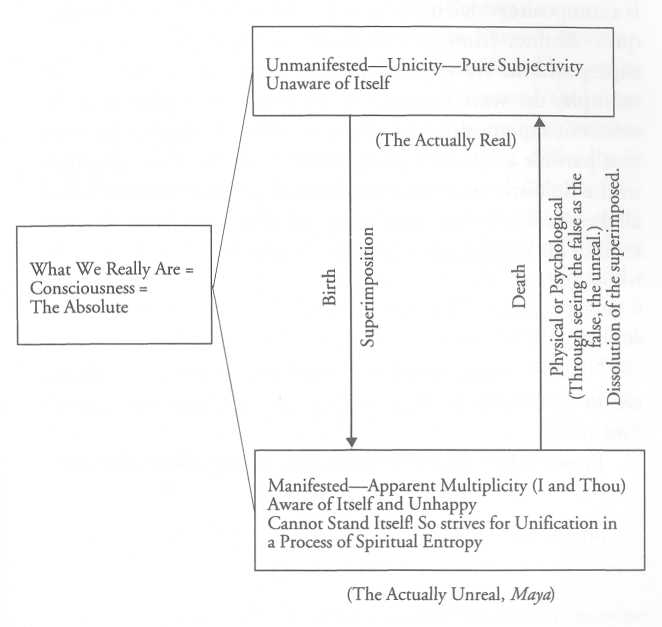
tradução
Observe como a atividade mental – que é essencialmente a imaginação – se sobrepõe ao real e assim produz o mundo da multiplicidade. Somente quando a pessoa morre psicologicamente para tudo isso, existe o estado natural sobre o qual Maharaj fala [embora não haja “alguém” que o viva!], e o ciclo se completou.
A sobreposição assume vida própria, de modo que não há conscientidade [consciousness] de ser um composto de real e irreal. Curiosamente, há uma analogia científica moderna. Os físicos usam o termo “superposição” para denotar uma sobreposição de uma coisa sobre outra, como uma dupla exposição na fotografia. Uma “superposição coerente” vai, no entanto, mais longe do que isso. É um compósito que assumiu uma identidade e um carácter próprios, bastante distintos dos seus componentes originais. Essas superposições coerentes são muito comuns na mecânica quântica. Por exemplo, a função de onda de uma partícula como um fóton é a superposição coerente de todas as interações possíveis entre essa partícula e um sistema de medição.[[Zukav, Gary. The Dancing Wu Li Masters—Uma Visão Geral da Nova Física, Nova York: Bantam Books, 1980, p. 270.]] Visto sob esta luz, o homem no estado dualista se manifesta como a superposição de todas as interações possíveis entre o “observador” [ou seja, a soma total de seu condicionamento] e o “mundo”.
“Nossas vidas, em vez de serem vividas por nós como parecemos pensar, na verdade estão sendo vividas para nós como todos os personagens de um sonho…” R.S. Balsekar, Apontamentos de Nisargadatta Maharaj
original
Note how mind activity—which is essentially the imagination—superimposes itself on the real and in this way produces the world of multiplicity. Only when one dies psychologically to all that, there is the natural state Maharaj talks about [although no “one” who lives it!], and the cycle has completed itself.
The superimposition takes on a life of its own, so that there is no awareness of one being a composite of real and unreal. Interestingly, there is a modern scientific analogy. Physicists use the term “superposition” to denote a superimposition of one thing onto another, such as a double exposure in photography. A “coherent superposition” goes, however, farther than that. It is a composite which has assumed its own identity and character, quite distinct from its original components. Such coherent superpositions are very common in quantum mechanics. For example, the wave function of a particle like a photon is the coherent superposition of all the possible interactions between that particle and a measuring system.[[Zukav, Gary. The Dancing Wu Li Masters—An Overview of the New Physics, New York: Bantam Books, 1980, p. 270.]] Seen in this light, man in the dualistic state manifests himself as the superposition of all the possible interactions between the “observer” [i.e., the sum total of his conditioning] and the “world.”
“Our lives, instead of being lived by us as we seem to think, are in fact being lived for us like all the characters in one’s dream….” From: R.S. Balsekar, Pointers from Nisargadatta Maharaj
